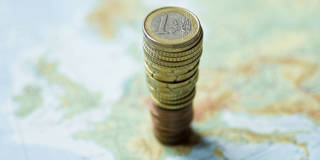Faced with a wartime economy, an escalating energy crisis, and technological competition from China and the US, the European Union must take drastic measures to complete its green-energy transition and facilitate critical investments. A sense of common purpose and greater fiscal coordination are essential to achieving both goals.
BRUSSELS – Russia’s invasion of Ukraine has thrown the European Union into yet another full-blown economic and political crisis. But while the war is the immediate cause of soaring gas, fuel, and electricity prices, the roots of Europe’s current pain run much deeper. The vulnerabilities of the European energy system have been evident since at least 2008. But the EU has been too slow to respond, failing to take the necessary measures to ensure greater resilience.

BRUSSELS – Russia’s invasion of Ukraine has thrown the European Union into yet another full-blown economic and political crisis. But while the war is the immediate cause of soaring gas, fuel, and electricity prices, the roots of Europe’s current pain run much deeper. The vulnerabilities of the European energy system have been evident since at least 2008. But the EU has been too slow to respond, failing to take the necessary measures to ensure greater resilience.